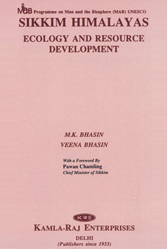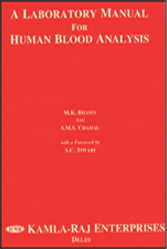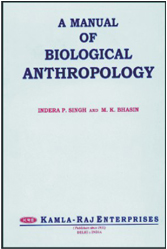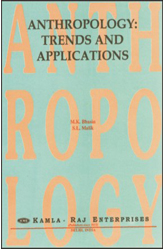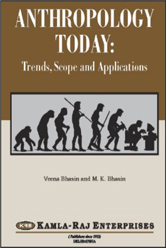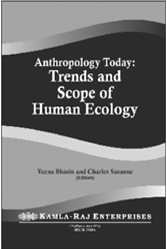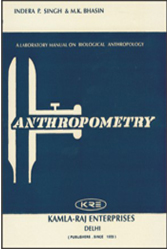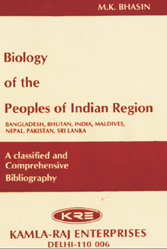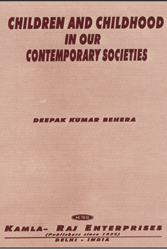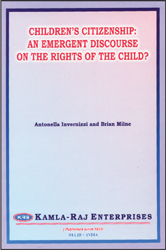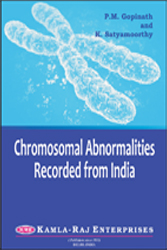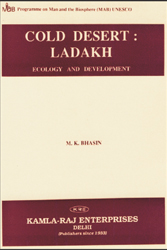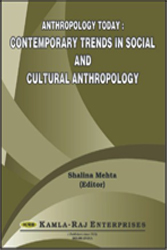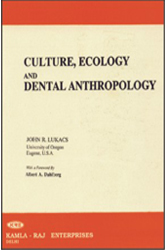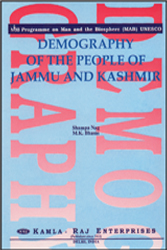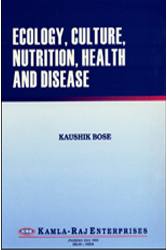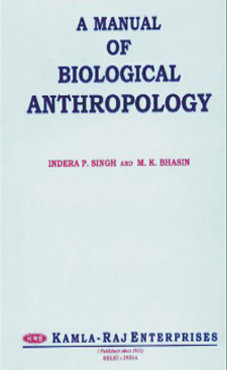CONTENTS
Preface
Acknowledgements
1. INTRODUCTION
1.1 Introduction
2. ANTHROPOMETRY
2.1 INTRODUCTION
2.2 INSTRUMENTS
3. OSTEOLOGY
3.1 INTRODUCTION
3.2 TYPES OF BONE
3.3 CHARACTERISTICS OF BONE
3.4 NAME OF BONE
3.4.1 Axial Skeleton
3.4.1.1 Skull
3.4.1.2 Vertebrae
3.4.1.3 Sternum
3.4.1.4 Ribs
3.4.2 Appendicular Skeleton
3.4.2.1 Upper Limbs
3.4.2.2 Lower Limbs
3.5 DETERMINATION OF SEX
3.6 TABLE OF BONES
4. OSTEOMETRY
4.1 STERNUM
4.1.1 Measurements
4.1.2 Indices
4.2 RIBS
4.2.1 Measurements
4.2.2 Indices
4.3 THORAX AS A WHOLE
4.3.1 Measurements
4.3.2 Index
4.4 VERTEBRAE
4.4.1 Measurements
4.4.2 Angle
4.4.3 Indices
4.5 CLAVICLE
4.5.1 Measurements
4.5.2 Angles
4.5.3 Indices
4.6 SCAPULA
4.6.1 Measurements
4.6.2 Angles
4.6.3 Indices
4.7 HUMERUS
4.7.1 Measurements
4.7.2 Angles
4.7.3 Indices
4.8 RADIUS
4.8.1 Measurements
4.8.2 Angles
4.8.3 Indices
4.9 ULNA
4.9.1 Measurements
4.9.2 Angles
4.9.3 Indices
4.10 HAND
4.10.1 Measurements
4.10-A Navicular or Scaphoid Bone
4.10-A (1) Measurements
4.10-A (2) Indices
4.10-B Lunate Bone
4.10-B (1) Measurements
4.10-B (2) Angles
4.10-B (3) Indices
4.10-C Triquetral Bone
4.10-C (1) Measurements
4.10-C (2) Indices
4.10-D Pisiform Bone
4.10-D (1) Measurements
4.10-D (2) Indices
4.10-E Trapezium Bone
4.10-E (1) Measurements
4.10-E (2) Indices
4.10-F Trapezoid Bone
4.10-F (1) Measurements
4.10-F (2) Indices
4.10-G Capitate Bone
4.10-G (1) Measurements
4.10-G (2) Indices
4.10-H Hamate Bone
4.10-H (1) Measurements
4.10-H (2) Angle
4.10-H (3) Indices
4.11 PELVIS
4.11.1 Measurements
4.11.2 Angles
4.11.3 Indices
4.12 SACRUM
4.12.1 Measurements
4.12.2 Angles
4.12.3 Indices
4.13 FEMUR
4.13.1 Measurements
4.13.2 Angles
4.13.3 Indices
4.14 PATELLA
4.14.1 Measurements
4.14.2 Angles
4.15 TIBIA
4.15.1 Measurements
4.15.2 Angles
4.15.3 Indices
4.16 FIBULA
4.16.1 Measurements
4.16.2 Angles
4.16.3 Indices
4.17 FOOT AS A WHOLE
4.17-A Tarsus
4.17-A (1) Measurements
4.17-A (2) Indices
4.17-B Talus Bone
4.17-B (1) Measurements
4.17-B (2) Angles
4.17-B (3) Indices
4.17-C Calcaneous Bone
4.17-C (1) Measurements
4.17-C (2) Angles
4.17-C (3) Indices
4.17-D Navicular Bone
4.17-D (1) Measurements
4.17-D (2) Indices
4.17-E Cuneiform Medial I Bone
4.17-E (1) Measurements
4.17-E (2) Indices
4.17-F Cuneiform Intermedium II and Cuneiform Laterale III Bone
4.17-F (1) Measurement
4.17-F (2) Indices
4.17-G Cuboid Bone
4.17-G (1) Measurements
4.17-G (2) Indices
4.17-H Metratarsus
4.17-H (1) Measurements
4.17-H (2) Angles
4.17-H (3) Indices
4.17-I Phalanges
4.17-I (1) Measurements
4.17-I (2) Indices
4.18 PROPORTION INDICES
4.19 OSTEOMETRY OF THE POST-CRANIAL SKELETON
4.20 ESTIMATION OF STATURE FROM BONES OF UPPER AND LOWER EXTREMITIES
4.21 A METHOD FOR STUDYING THE SKELETON OF HUMAN FOETUSES
5. CRANIOMETRY
5.1 INTRODUCTION
5.2 DETERMINATION OF SEX AND AGE OF SKULL
5.3 AGEING OF SKULL
5.4 CRANIOMETRY TERMS
5.5 CRANIOMETRIC LANDMARKS
5.6 CRANIOMETRIC MEASUREMENTS
5.6.1 Length Measurements on Neurocranium (Brain Cavity)
5.6.2 Breadth Measurements on Neurocranium (Brain Cavity)
5.6.3 Height Measurements on Neurocranium (Brain Cavity)
5.6.4 Circumference, Measurements Arcs and Chords on Neurocramium (Brain Cavity)
5.6.5 Length Measurements on Splanchonocranium (Face)
5.6.6 Breadth Measurements on Splanchonocranium (Face)
5.6.7 Height Measurements on Splanchonorcanium (Face)
5.6.8 Measurements on Orbit and Inter-orbital Region
5.6.9 Measurements of Nasal Region
5.6.10 Measurements on Upper Jaw and Palate
5.6.11 Measurements on Lower Jaw or Mandible
5.6.12 Angles on the Face of the Skull
5.6.13 Angles of the Cranium 5.6.14. Volume and Weight of Skull
5.7 CRANIOMETRIC INDICES
5.8 CRANIOGRAPHIC TECHNIQUES
5.8.1 Drawing of Curves
5.8.1.1 Sagittal Curves
5.8.1.2 Frontal Curves
5.8.1.3 Horizontal Curves
5.8.2 Measurements on Craniographs
5.9 CRANIOSCOPIC OBSERVATION
6. SOMATOMETRY
6.1 INTRODUCTION
6.2 SOMATOMETRIC TECHNIQUES
6.3 ASCERTAINMENT OF AGE
6.3.1 Age Grouping
6.4 SOMATOMETRIC LANDMARKS
6.5 SOMATOMETRIC MEASUREMENTS
6.5.1 Projective Height Measurements of the Body in Standing Position
6.5.2 Measurements of Extremities and Span
6.5.3 Measurements on the Dorsal Side
6.5.4 Projective Height in Sitting Position
6.5.5 Linear Measurements of Frontal Trunk and Neck
6.5.6 Breadth and Depth Measurements of Trunk and Waist
6.5.7 Length and Breadth Measurements of the Upper Extremities
6.5.8 Length and Breadth Measurements of Lower Extremities
6.5.9 Girth Measurements of Upper Extremities
6.5.10 Girth Measurements of Lower Extremities
6.5.11 Body Weight and Volume
6.5.12 Skinfold Measurements
6.5.13 Head Measurements - Longitudinal Measurements of Head
6.5.14 Breadth Measurements of Head and Face
6.5.15 Breadth Measurements on Nose and Mouth
6.5.16 Height and Thickness Measurements of Forehead and Face
6.5.17 Height and Thickness Measurements of the Mouth and Chin Region
6.5.18 Measurements on Ear
6.5.19 Angles on Face
6.5.20 Circumference of Girth and Arc Measurements of Head and Face
6.6 SOMATOMETRIC INDICES
6.6.1 Relative Height-Length Proportions
6.6.2 Vertical Horizontal Relationship
6.6.3 Comparisons of Extremities with Each Other
6.6.4 Relative Proportions of Breadths, Thickness and Girths
6.6.5 Height-Weight Indices
6.6.6 Robusticity-Indices
6.6.7 Skinfold Thickness and Weight Indices and Relative Skinfold Thickness
6.6.8 Indices of Head and Relationship of Head and Face
6.6.9 Main Proportions of Face
6.6.10 Indices of the Eye-Nose Region
6.6.11 Indices of Ear
6.6.12 Indices of the Mouth-Chin Region
6.6.13 Skinfold Thickness and Weight Indices
6.7 NOMOGRAMS
6.8 SOMATOSCOPIC TECHNIQUES
6.8.1. Body Postures (Standing) after Brown
6.8.2 Neck
6.8.3 Abdomen
6.8.4 Buttock
6.8.5 Upper and Lower Extremities with Hand and Foot
6.8.6 Hand
6.8.7 Fingers
6.8.8 Finger Nails
6.8.9 Foot
6.8.10 Toes
6.8.11 Toe Nails
6.8.12 Skin colour
6.8.12.1 Luschan’s Skin Colur Chart
6.8.12.2 Measurements of Skin Colour by Spectrometry
6.8.13 Hair
6.8.13.1 Hair Colour
6.8.13.2 Hair Form
6.8.13.3 Hair Texture
6.8.13.4 Quantity of Hair
6.8.13.5 Hair Whorls
6.8.13.6 Beard and Moustache
6.8.13.7 Mid-Phalangeal Hair
6.8.14 Head
6.8.14.1 Vertex
6.8.14.2 Occiput
6.8.14.3 Total Face
6.8.14.4 Forehead
6.8.14.5 Widow’s Peak
6.8.15 Cheeks
6.8.16 Eyes
6.8.17 Nose
6.8.17.1 Nasal Root
6.8.17.2 Nasal Bridge
6.8.17.3 Tip of Nose
6.8.17.4 Nasal Wings and Alae
6.8.17.5 Nasal Septum
6.8.17.6 Nasal Cavity
6.8.17.7 Surface of Nasal Cavity
6.8.18 Lips
6.8.18.1 Integumental Upper Lip
6.8.18.2 Integumental Lower Lip
6.8.19 Mouth
6.8.20 Teeth
6.8.21 Lip and Chin Furrow
6.8.21.1 Size
6.8.21.2 Profile of Chin
6.8.21.3 Shape and Size of Chin
6.8.21.4 Tongue
6.8.21.5 Tongue Pigmentation
6.8.21.6 Prognathism
6.8.22 External Ear
6.8.23 Puberty Rating
6.8.23.1 Stages of Axillary and Facial Hair Development
6.8.23.2 Age at Menarche
6.8.24 Genitalia
6.8.24.1 Male Genitalia
6.8.24.2 Female External Genitalia
6.8.24.3 Breasts
6.8.24.4 Buttocks and Lumbar Curvature
6.8.25 The Mongolian or Sacral Spot
6.8.26 Behavioural Traits
6.8.26.1 Hand Clasping
6.8.26.2 Arm Folding
6.8.26.3 Leg Folding
6.8.26.4 Handedness
6.8.26.5 Tongue Rolling
6.8.26.6 Tongue Folding
6.8.26.7 Tongue Curling
6.8 SKELETAL AGE
6.9.1 Soft-Tissue Measurements from Radiographs
7. RESPIRATORY FUNCTIONS
7.1 INTRODUCTION
7.2 RESPIRATORY OBSERVATIONS
7.3 Instrument
7.3.1 Vital Capacity (VC) or Forced Vital Capacity (FVC)
7.3.2 Expiratory Capacity and Inspiration Capacity
7.3.3 Maximum Breathing Capacity
8. BODY DENSITY
8.1 INTRODUCTION
8.2 BODY DENSITY ESTIMATION
8.2.1 Water Displacement Techniques
8.2.2 Under Water Weighing Technique
8.3 MEASUREMENT EXTREMITY SEGMENT VOLUMES
8.3.1 Reproducibility
8.4 Indices
9. SOMATOTYPING
9.1 INTRODUCTION
9.2 ANTHROPOMETRIC MEASUREMENT TECHNIQUE FOR ASSESSING HEATH - CARTER SOMATOTYPE
9.3 HEATH - CARTER SOMATOTYPE RATING FORM
9.4 CALCULATING THE HEATH CARTER ANTHROPOMETRIC SOMATOTYPE
9.4.1 Endomorphy Rating
9.4.2 Mesomorphy Rating
9.4.3 Ectomorphy Rating
9.4.4 The Heath Carter Anthropometric Somatotype
9.5 SOMATOTYPE COMPONENT CALCULATIONS
9.6 SPECIFICATION FOR SOMATOTYPE CATEGORIES
9.6.1 Regions of Somatochart
9.6.2 Technology to Describe Individual Somatotypes
9.6.3 Construction of Somatochart
9.7 HEIGHT - WEIGHT RATIO FACTOR TABLE
9.7 SOMATOTYPE COMPONENT CALCULATIONS
9.8 SOMATOTYPE COMPONENT CALCULATIONS
10. PSYCHOMOTOR TESTS
10.1 INTRODUCTION
10.2 PSYCHOMOTOR TESTS
10.2.1 Strength
10.2.1.1 Static Muscular Strength
10.2.1.2 Explosive Muscular Strength
10.2.2 Speed
10.2.2.1 The Dashes
10.2.3 Agility and Co-ordination
10.2.3.1 Flexibility Test
10.2.3.2 The Walking Balance Test
10.2.3.2.AThe Turning Balance Test
10.2.3.3 The Shuttle Run Test
10.2.3.4 The Co-ordination Test
10.2.4 Persistence (per time)
10.2.5 Endurance Test
10.2.5.1 Step Test
10.2.6 Studies of Functional Asymmetry
10.2.6.1 The Hand-clasping Test
10.2.6.2 The Arm-folding Test
10.2.6.3 The Leg-folding Test
10.2.3 Agility and Co-ordination
10.2.3.1 Flexibility Test
10.2.3.2 The Walking Balance Test
10.2.3.2.A The Turning Balance Test
10.2.3.3 The Shuttle Run Test
10.2.3.4 The Co-ordination Test
10.2.4 Persistence (per time)
10.2.5 Endurance Test
10.2.5.1 Step Test
10.2.6 Studies of Functional Asymmetry
10.2.6.1 The Hand-clasping Test
10.2.6.2 The Arm-folding Test
10.2.6.3 The Leg-folding Test
11. DENTAL ANTHROPOLOGY
11.1 INTRODUCTION
11.2 DENTAL EXAMINATION
11.2.1 Tooth Types and Formula
11.2.1.1 Teeth Types
11.2.1.2 Tooth Formula
11.2.2 Surface of Teeth
11.2.3 Primary and Permanent Teeth
11.2.4 Dental Observations
11.2.4.1 Number of Primary and Secondary Teeth
11.2.4.2 Numerical Variations
11.2.4.3 Dental Morphology
11.2.4.4 Mutilations
11.2.4.5 Attrition
11.2.4.6 Metric Measurements
11.3 PREPARATION OF DENTAL CASTS
11.3.1 Apparatus and Chemicals
11.3.2 Method of obtaining Dental Impressions
11.4 DENTINE EXPOSURE IN HUMAN TOOTH ATTRITION
11.4.1 The Dentinal Area
11.4.1.1 The Maxillary Teeth
11.4.1.2 The Mandibular Teeth
11.4 DENTINE EXPOSURE IN HUMAN TOOTH ATTRITION
12. DIET SURVEY
12.1 INTRODUCTION
12.1.1 Importance of Diet Survey
12.1.2 Purpose of Diet Surveys
12.1.3 Units of Diet Surveys
12.1.4 Methods of Diet Survey
12.1.5 Organization and Planning of Diet Surveys
12.1.6 Use of Standardised Cups and Certain Foods in Diet Survey
12.2 NUTRITIONAL STATUS
12.2.1 Food Habits
12.2.2 Individual Dietary Intake (Oral Questionnaire)
12.2.2.1 Food Consumption
12.2.2.2 Food Consumption (For Cooked Food)
12.2.2.3 Cooked Food Discarded Appendix
13. DERMATOGLYPHICS
13.1 INTRODUCTION
13.2 METHODS OF RECORDING DERMATOGLYPHICS
13.3 DERMATOGLYPHIC PATTERN CONFIGURATIONS
13.4 PRINCIPLES OF CONFIGURATIONAL ARRANGEMENT
13.5 DERMATOGLYPHIC LANDMARKS
13.6 FINGER DERMATOGLYPHICS
13.6.1 Configurations of Fingers
13.6.2 Direction of Whorls
13.6.3 Finger Ball Tip Prints Indices
13.6.4 Symmetry, Asymmetry and Actual and Chance Frequency
13.6.5 Bimanuar
13.6.7 Dactylodiagram
13.6.8 Quantitative Value
13.6.8.1 Finger Ridge Count
13.6.9 Genotypes
13.7 CONFIGURATIONS OF MIDDLE AND PROXIMAL PHALANGES
13.8 THE PALMAR DERMATOGLYPHICS
13.8.1 Configurational Areas
13.8.2 Digital Triradii
13.8.3 Tracing of Main Lines
13.8.4 Scheme of Number for Formulation of Palmar Main Line
13.8.5 Formulatory Symbols in the Presence of Accessory Triradii
13.8.6 Abortive Nature and Polymorphism of C-Line
13.8.7 C-and A-Lines Exist
13.8.7.1 C-Line Exist
13.8.7.2 A-Line Exist
13.8.8 Position of Axial Triradii
13.8.9 Interpretation and Formulation of Palmar Configuration
13.8.9.1 Hypothenar Triradii and Patterns
13.8.9.2 Hypothenar Patterns
13.8.9.3 Thenar and First Interdigital Areas
13.8.9.4 Second, Third and Fourth Interdigital Areas
13.8.10 Palmar Formula
13.8.11 Modal Types of Lines D and A
13.8.11.1 Three Co-ordinate Graph
13.8.12 Main Line Index
13.8.12.1 Right-Left Ratio
13.8.12.2 Transversality
13.8.13 Pattern Intensity
13.8.14 Quantitative Ridge Counts
13.8.14.1 Ridge-Counts of the Patterns of the Palms
13.8.14.2 Ridge-Counts on Palm (Interdigital Areas and d-t)
13.9 PLANTAR DERMATOGLYPHICS
13.9.1 Patterns on Toes
13.9.2 Toe Prints Indices
13.9.3 Toe Ridge Count
13.9.4 The Sole
13.9.5 Configurational Areas
13.9.6 Plantar Triradii
13.9.7 Method for Analysis of Plantar Print
13.9.8 Formulation of Main Lines
13.9.9 Modal Types
13.9.10 Calculation of Main Line Index
13.9.10.1 Transversality
13.9.11 Formulation of Configurational Areas with Pattern
13.9.12 Complete Plantar Formula
13.9.13 Quantitative Ridge Count
13.9.13.1 Ridge-Counts of Plantar Patterns
13.9.13.2 Ridge-Counts of the Digital Areas of Soles
13.10 DEVELOPMENT OF DERMAL RIDGES IN THE FOETUS
13.10.1 Method
13.10.2 Structure of Dermal Surface and Terminology
13.11 PLANTAR DERMATOGLYPHICS
13.11.1 Topological Classification of Finger-Tip Dermatoglyphics
13.11.2 Topological Description of Palmar and Plantar Dermatoglyphics
13.11.3 Topological Classification of Palmar Dermatoglyphics
13.11.3.1 Loops
13.11.3.1 General Principles
13.11.3.2 Triradii
13.11.3.3 Writing of Formula
13.11.3.4 Instructions for Classifying Patterns on the Palm
13.11.3.5 Hypothenar Area
13.11.4 Topological Classification of Plantar Dermatoglyphics
13.11.4.1 Loops
13.11.4.2 Triradii
13.11.4.3 Writing the Formula
13.11.4.4 Instructions for Classifying Patterns on the Distal Half of the Sole
13.11.4.5 Instructions for Classifying Patterns on the Proximal Sole
13.11.5 Dermatoglyphic Dictionary
13.12 FLEXION CREASES
13.12.1 Hand Flexion Creases
13.12.1.1 Digital Creases
13.12.1.2 Palm Flexion Creases
13.12.2 Plantar Flexion Creases
13.13 FORENSIC APPLICATION
13.13.1 Finger Prints
13.13.1.1 Classification
13.13.1.2 Method of Arrangements of Finger Prints Cards for Record
13.13.1.3 Other Systems of Classification
13.13.1.4 Latent Finger Print
13.13.1.5 Comparison of Finger-print Impression
13.13.2 Middle Phalangen Impression
13.13.2.1 Classification
13.13.3 Palm Prints
13.13.3.1 Classification
13.13.4 Sole Print
13.13.4.1 Classification
14. ANTHROPO-DEMOGRAPHY
14.1 INTRODUCTION
14.2 SCHEDULE
14.2.1 Identification
14.2.2 Type of Residence/Housing
14.2.3 Preliminary Information
14.2.4 Genealogy
14.2.5 Principal Source of Income of the Household
14.2.6 Fertility Behaviour
14.2.6.1 Reproductive Cycle and Nuptiality Behaviour
14.2.6.2 Reproductive History
14.2.6.3 Safe Motherhood
14.2.6.4 Information Regarding Children Born Alive
14.2.6.5 Lactation and Post-Partum
14.2.6.6 Choosing Sex of the Child/Preference for a Particular Sex of the Child
14.2.7 Mortality
14.2.7.1 Mortalities (Including Mortality Cases of Accidents/ Death/Suicides etc.)
14.2.7.2 Abortions/Miscarriages
14.2.7.3 Still Births
14.2.8 Family Planning
14.3 POPULATION STUDY: MEASURES
14.3.1 Measures of Sex Composition
14.3.2 Measures of Age Composition
14.3.3 Measures of Economic Activity
14.3.4 Measures of Educational Characteristics
14.3.5 Measures of Population Distribution
14.3.6 Measures of Growth of Population
14.3.7 Measures of Mortality
14.3.8 Measures of Fertility
14.3.9 Measures of Nuptiality
14.3.10 Measures of Migration
14.3.11 Methods of Population Estimation and Projection
14.3.12 Demographic Models
15. STATISTICAL METHODS
15.1 INTRODUCTION
15.2 MEASURES OF CENTRAL TENDENCY
15.3 MEASURES OF DISPERSION
15.4 CORRELATION AND REGRESSION
15.5 TESTS OF SIGNIFICANCE
15.6 COLLECTION OF DATA
15.7 COMPILATION AND PRESENTATION OF STATISTICAL DATA
15.7.1 Tables
15.7.2 Graphs
15.7.3 Z Charts and Lorenz Curves
15.7.4 Diagrams
15.8 GRAPHING FREQUENCY DISTRIBUTIONS
15.9 SKEWNESS
15.10 PHRASES TO DESCRIBE CORRELATION
